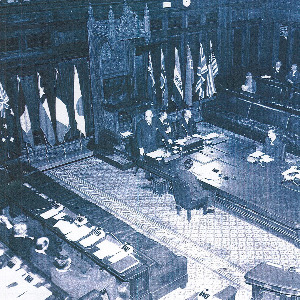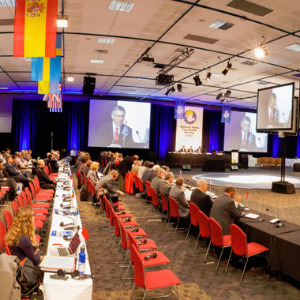It was a cold and foggy winter morning in Canberra on 10 July 1961 when the Australian Prime Minister, R.G. Menzies, opened the First Antarctic Treaty Consultative Meeting. Menzies joked that the delegates were being treated to ‘a proper Antarctic welcome’, at the same time reminding them that Antarctica was in Australia’s neighbourhood.

First Antarctic Treaty Consultative Meeting,1961. Courtesy National Archives of Australia.
The diplomats at the meeting represented the 12 nations that had signed the 1959 Antarctic Treaty in Washington. The contracting parties honoured Australia by unanimously choosing Canberra as their first meeting place once the Treaty came into force, and took the unprecedented step of writing their choice in the text.
The Antarctic Treaty Consultative process commenced a new chapter in the governance of Antarctica. The Treaty is a remarkable document. As a result of an Australian initiative to prevent the Antarctic's militarisation, the Antarctic Treaty was hailed as the first arms control instrument negotiated during the Cold War.
The Australian Antarctic Territory comprises 42% of the continent, making Australia the major claimant. The foundations of Australia’s claim were laid in 1912, when Douglas Mawson and his Australasian Antarctic Expedition unfurled the Union Jack and the Australian Flag in the region due south of Australia and claimed it for ‘the Empire and for Australia more particularly.’

35th Antarctic Treaty Consultative Meeting, 2012. Courtesy Australian Antarctic Division.
In this Antarctic Centenary year, Australia recently hosted the 35th Antarctic Treaty Consultative Meeting in Hobart. Today 50 nations are parties to the Treaty. As a result of another Australian initiative, the ‘closed door’ system that characterised the July 1961 gathering was relaxed. The 35th meeting in Hobart permitted members of the public, including academics, to sit and observe how diplomats negotiate the measures that govern the 7th continent.
Dr Marie Kawaja is an ARC Post-doctoral Fellow, affliated with the School of History. She is currently writing the political and diplomatic history of the Australian Antarctic Territory.